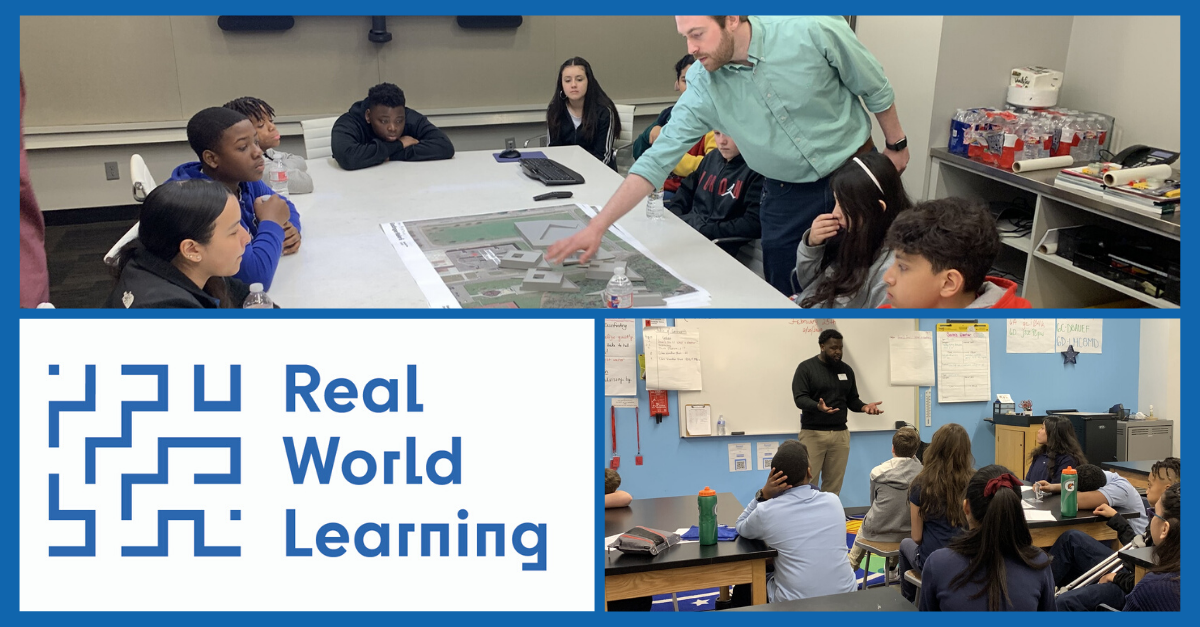You may be wondering for personal or professional reasons about the state of innovation and future planning within K-12 education right now. The abrupt shift in education plans this spring in response to COVID-19 had a significant impact to families, businesses and schools. As a result, learning looked quite different but was it all bad? Our education system has been bound by outdated scheduling and seat time requirements, balancing electives against college entrance requirements (for programs that students weren’t persisting through) and it all got blown up by a virus.
Real World Learning was ahead of the COVID-19 curve. Beginning in 2017, the Kauffman Foundation conducted a landscape analysis across our region to look at K-12 education opportunities in the context of workforce development and alignment. What was discovered was that great things were happening in nearly every school district in the region. However, while these efforts were inspiring, they are fragmented and isolated making it difficult for the business community to engage and support at scale. Another key finding was that an overwhelming majority of graduates were not leaving high school with the experiences that would prepare them for what comes next, either college or joining the workforce.
A group of passionate stakeholders came together representing employers, civic groups and education leaders and they came up with the Kansas City Region’s Portrait of a Graduate to identify the key skills needed to succeed in work and life. Then they took it a step further and determined what experiences would support students attaining these skills and defined them as Market Value Assets (MVAs). These are experiences that students should attain in addition to their diploma. Examples of MVAs include work experiences like internships and client projects, Industry-Recognized Credentials, at least 9 hours of college credit aligned to an identified career pathway, and entrepreneurial experiences. These experiences provide a greater chance of success as students embark on the next steps in their journey to work, learn and contribute to our local economy.
As a result of regionally redefining success for high school graduates more than 30 area school districts have committed to redesigning high school and ensuring that 100% of their graduates attain at least one of these MVA experiences by 2030. How will they ensure this happens? With the engagement of the business community! We need employers like you to engage with students, educators and each other to provide opportunities to make learning happen, for real.
What does that look like? Maybe you can host a field trip, mentor a student, give students a problem to solve, guide an educator in understanding your business so they can infuse their teaching with industry context, there are a variety of options and schools in your backyard are looking to create connections with mutual benefit to you and their students.
How do you get started? The South Kansas City Chamber of Commerce is a key partner in connecting employers with Real World Learning. If you want to know more you can schedule time to connect individually or go ahead and commit to engaging by completing this survey and a member of the Real World Learning team will guide you through the next steps.
So many things may be different following this crisis, but one of the things that will stay the same is the need for diverse, skilled talent – now and in the future. Consider joining the movement.

